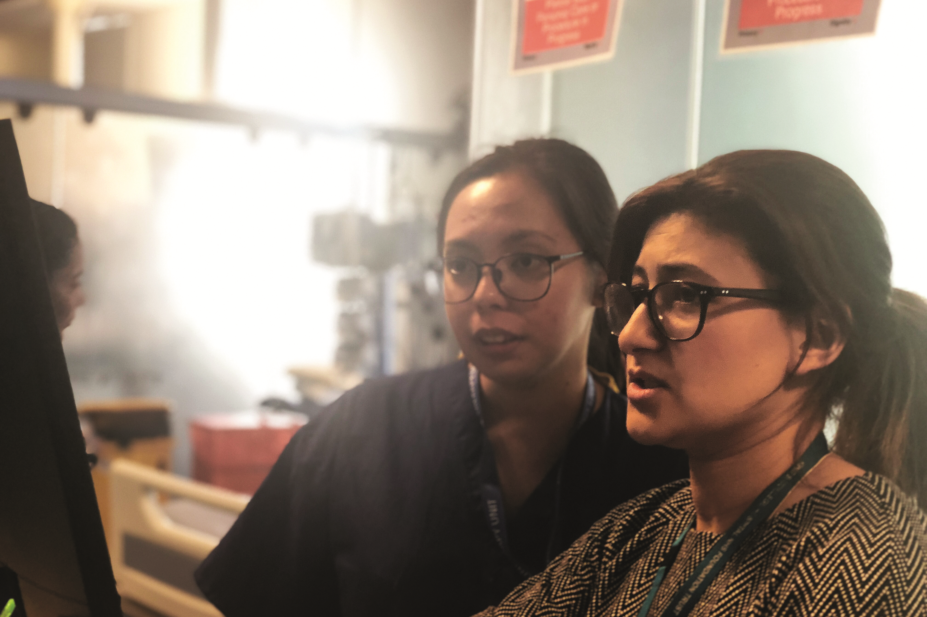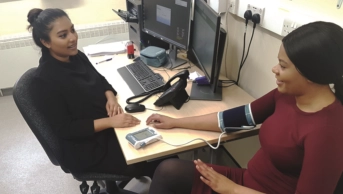
King’s College Hospital in London supports one of the largest liver transplant programmes in Europe and has an integrated hepatology programme that is renowned worldwide. The patient population on the liver intensive therapy unit (LITU) varies significantly from other adult units. We support liver transplantation and have a particular pedigree in the management of acute liver failure, decompensated chronic liver disease, hepatobiliary surgery, pancreatitis and complex abdominal conditions.
I work at King’s College Hospital as part of the liver pharmacy team where I have progressed to my current role as lead pharmacist for LITU. We provide pharmacy services to pre-transplantation, general hepatology and post-transplant cohorts.
Training and induction
Liver pharmacists usually attend national and international liver meetings to gain insight into novel treatments and procedures. This gives us an understanding of novel therapies. We usually provide basic survival guides by way of introduction to the liver team and we will also send new members out on study days.
09:00 start
I am always wary that we will have new, high-acuity patients on the unit. These patients require unprecedented levels of support but can still have excellent outcomes.
One of the simplest but most important interactions of the day is the immediate handover I receive from the nurse in charge at the start of my shift, who will communicate any issues and tell me about any particularly unwell patients. This helps inform and prioritise my practice.
09:30
My first new patient today is a young man diagnosed with rhabdomyolic multi-organ failure and heat stroke following ingestion of MDMA. He presented with “odd behaviour”, followed by seizure activity and coma with circulatory collapse and metabolic disarray on arrival. He was maintained in an induced coma to attenuate rises in intracranial pressure and required noradrenaline and milrinone infusions to maintain his blood pressure and cardiac output. He required continuous veno-venous haemofiltration at supra-normal doses to correct his profound metabolic acidosis, and was scheduled for therapeutic plasma exchange.
Screening the medication chart ensures medications are dosed appropriately for the prescribed high effluent volume renal replacement therapy, and that his liver is supported with an infusion of N-acetylcysteine. Given the large number of infusions these patients require, it is important to take note of potential drug interactions and to help the nurses manage intravenous access efficiently.
10:30
My next new patient is a young lady transplanted for Budd–Chiari syndrome (occlusion of the hepatic veins). A newly transplanted patient requires review of the pre-transplant assessment, the patient’s kidney and liver function, and a review of the donor and recipient cytomegalovirus, toxoplasmosis and hepatitis B core antibody status. This enables me to screen the drug chart to ascertain if the immunosuppressant dose is correct and whether any additional basiliximab or other medications are required in the immediate post-transplant phase.
The indication for transplant means the patient needs formal anticoagulation with heparin. This patient has blood in her drains and an international normalised ratio of 1.8; however, the surgeons described her as highly coagulopathic during her transplant. Although there is a risk she will bleed, the risk of clotting in her hepatic vessels is much higher and has grave consequences. I discuss this with the consultant and the transplant surgeons, and we agree to initiate a heparin infusion with tight monitoring of activated partial thromboplastin time ratio.
12:00
Following review of the remaining patients, I attend the daily consultant-led ward round. Patients are presented by one of the clinical fellows with a robust discussion around the assessment, diagnosis and management of the patient, with review of relevant imaging and blood tests. This provides an opportunity for me to discuss changes, additions and discontinuation of medication. As an independent prescriber, I take responsibility for the changes I suggest. Patients frequently have complex histories, and so my prescribing portfolio not only includes those drugs common to adult intensive care units (ICUs) but also encompasses specialist drugs, such as antiviral agents and immunosuppression.
I am regularly contacted by ICU pharmacists working at other hospitals who are managing patients with liver problems. Today, I answer an enquiry about the management of immunosuppressive therapy in an intubated patient. I explain that Advagraf® and Prograf® (tacrolimus) capsules can be emptied and mixed into a solution that can be safely administered via a nasogastric tube. I explore the other prescribed medications and advise against the use of erythromycin and fluconazole in the same patient as these drugs can significantly affect tacrolimus levels and are, therefore, best avoided.
15:00
I review a new admission to LITU — a patient who I have previously seen on the liver wards. She had been admitted to her local hospital with jaundice of unknown aetiology and subsequently had a negative viral screen. The patient was transferred to King’s College Hospital with deteriorating liver enzymes and progressive coagulopathy. She was diagnosed with drug-induced liver injury (DILI) after taking a herbal medication called ‘black cohosh’ for menopausal symptoms.
As part of her medication reconciliation process, I excluded other potential causes of DILI. Despite stopping the causative agent, this patient has become encephalopathic and is admitted to the ICU for airway protection. I note she fulfils poor prognostic criteria and will require assessment for super-urgent liver transplantation. I advise on the use of antibiotic prophylaxis and ensure inappropriate prescriptions are amended or discontinued.
16:00
I am informed of a new liver transplant patient with hepatitis B virus (HBV) as the indication for transplant. Six months prior to their transplant, the patient had been on tenofovir and achieved a reduction in HBV DNA but not an undetectable viral load. I was asked how to manage this patient after their transplant.
After confirming from the anaesthetic chart that the patient had received hepatitis B immunoglobulin during the an-hepatic phase (the phase where the old liver has been removed and the new liver has not yet been put in) to prevent contamination of the transplanted liver, I then advised on further management using hepatitis B immunoglobulin. I prescribed and supplied the subsequent doses of hepatitis B immunoglobulin and tenofovir, and documented my suggested plan and monitoring requirements.
16:30
A multidisciplinary team meeting takes place each day and includes transplant hepatologists, transplant surgeons, LITU intensivists, nurse transplant coordinators and a member of the liver pharmacy team.
At this meeting, all of the current inpatients, post-transplant patients, LITU patients and any referrals from other hospitals are discussed. All aspects of patient care are reviewed and plans/decisions are made, including those about medications. It was at this meeting that the hepatitis B immunoglobulin plan I had suggested was discussed and approved.
17:30 finish
How to get a job as a liver pharmacist
Desirable skills and traits would be:
- Having experience with liver disease;
- Being able to demonstrate the ability to appraise treatment where there may not be a strong body of evidence;
- Being able to demonstrate the ability to work as part of a multidisciplinary team;
- Having an independent prescribing qualification.


